APOLOGETICS - Archeology and the New Testament
- Archeology has found dramatic evidence of the accuracy of the Bible
- over 25’000 sites have been found and they are in accordance with the descriptions of the Bible
- Archeologists have used the biblical accounts to locate many ancient sites
Historical Evidence for the Gospels
Jesus Christ
The existence of Jesus Christ has been referred to by historian Josephus, historian Suetonius, magistrate Pliny the Younger, the Talmud, Playwright Lucian and possibly historian Thallus.

Jewish Historian Josephus
- Historian Josephus Flavius (37-100 AD) was a Jew born in Jerusalem to a father of priestly descent and a mother who claimed royal ancestry. He first fought against the Romans during the Jewish-Roman war (66-70 AD), but then surrendered to the Romans led by general Vespasian after the fall of Jotapata.
- He told Vespasian that Messiah prophecies had lead to the war and told him that he would become Roman emperor. Vespasian kept him as hostage and interpreter. When Vespasian indeed became in 69 AD, Vespasian freed Josephus and granted him Roman citizenship. Josephus defected fully to the Romans and became Vespasian’s son Titus’ adviser in the siege, conquest and destruction of Jerusalem.
- Josephus wrote “Antiquities of the Jews” and “The Jewish War” for a Roman audience and with a clear pro-Roman slant.
Josephus Flavius on John the Baptist
- Josephus writes in “Antiquities of the Jews”, Book 18, Chapter 5, 2: “Now some of the Jews thought that the destruction of Herod’s army came from God, and that very justly, as a punishment of what he did against John, that was called the Baptist: for Herod slew him, who was a good man… Herod, who feared lest the great influence John had over the people might put it into his power and inclination to raise a rebellion… Accordingly he was sent a prisoner, out of Herod’s suspicious temper, to Macherus, the castle I before mentioned, and was there put to death”. This corresponds to Mt 14:4, Mk 6:18.
- Josephus says that the 36 AD defeat of Herod Antipas in his conflict with Aretas IV of Nabatea was seen by Jews of the time as brought about by Herod’s unjust execution of John the Baptist.
Josephus Flavius on James, Jesus’ brother’s death - Josephus writes in his “Antiquities of the Jews”, Book 20, Chapter 9,1: “And now Caesar, upon hearing the death of Festus, sent Albinus into Judea, as procurator. But the king deprived Joseph of the high priesthood, and bestowed the succession to that dignity on the son of Ananus, who was also himself called Ananus… Festus was now dead, and Albinus was but upon the road; so he assembled the sanhedrin of judges, and brought before them the brother of Jesus, who was called Christ, whose name was James, and some others; and when he had formed an accusation against them as breakers of the law, he delivered them to be stoned.”
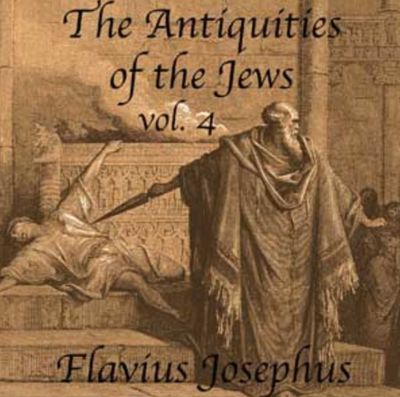
Greek Historian Thallus
- Thallus wrote a three-volume history of the Mediterranean world from before the Trojan War to the 167th Olympiad in Koine Greek. He writes in around 52 AD about a darkness coming over the world, which he explained with an eclipse.
- If this indeed is a description of the darkness at Jesus’ crucifixion, the explanation of an eclipse won’t work. Solar eclipses don’t occur at a Passover (that follows lunar calendar) and lunar eclipses are not visible at mid day (the 6th hour as reported in the gospels) due to the moon being in direct opposition to the sun, and therefore below the horizon. Yet it remains interesting that there is a record about a darkness outside of the Bible.
Pliny the Younger on how to treat followers of Christ
- Pliny the Younger (61 – 112 AD) was a lawyer, author, and proconsul of Ancient Rome. Pliny served as an proconsul of Bithynia and Pontus under Trajan (98–117 AD) and his letters to Trajan provide one of the only records we have of the relationship between the imperial office and provincial governors. Pliny was consistent in his pursuit of suspected Christian members.
- In a letter to Trajan 112 AD he says about Christians: “They were accustomed to meet on a fixed day before dawn and sing responsively a hymn to Christ as to a god, and bound themselves to a solemn oath, not to any wicked deeds, but never to commit any fraud, theft, adultery, never to falsify their word, not to deny a trust when they should be called upon to deliver it up. When this was over, it was their custom to depart and to assemble again to partake of a meal—but ordinary and innocent food”.
- The letter is the earliest surviving Roman document to refer to early Christians, and provides key information on early Christian beliefs and practices; and how these were viewed and dealt with by the Romans (death sentence if not denying on third chance). The letter and Trajan’s reply indicates that at the time Christians were not sought out or tracked down by imperial orders, but that they had no protection from local persecutions.
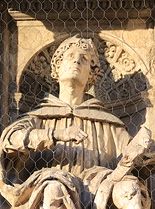
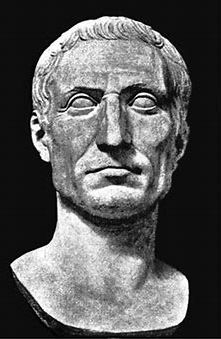
Roman Historian Suetonius on expulsion of the Jews
- Roman historian Suetonius (69-122+ AD) wrote a work describing the lives of twelve successive Roman rulers, from Julius Caesar to Domitian, entitled ‘De Vita Caesarum’. In his “Life of Claudius” he records Claudius ordering an expulsion of Jews in 49 AD (25.4): “Since the Jews constantly made disturbances at the instigation of Chrestus, he expelled them from Rome.”
- Suetonius came to favor with Emperor Hadrian and Trajan through Pliny, governor of Bithynia and Pontus 110-112 AD. Suetonius served as Secretary of studies under Emperor Trajan (98-117 AD) and as Emperor’s secretary under Emperor Hadrian (117-138 AD).
Syrian Greek Playwright Lucian satire on Christians and Christ
- Syrian Greek playwright, rhetorician and satirist Lucian of Samosata (125-180+ AD) wrote among many other things a satire about Christians and Christ called “The Passing of Peregrinus“. The lead character, a cynic philosopher named Peregrinus takes advantage of the generosity of the Christians before burning himself at the Olympic Games of 165 AD.
- The text is one of the few classical tests that contain explicit reference to Christians and Christianity.
- A quote: “The Christians, you know, worship a man to this day—the distinguished personage who introduced their novel rites, and was crucified on that account. … You see, these misguided creatures start with the general conviction that they are immortal for all time, which explains their contempt of death and voluntary self-devotion which are so common among them; and then it was impressed on them by their original lawgiver that they are all brothers, from the moment that they are converted, and deny the gods of Greece, and worship the crucified sage, and live after his laws. All this they take quite on faith, with the result that they despise all worldly goods alike, regarding them merely as common property.”
Talmud on Jesus
- The Talmud has two parts, the Mishnah, written around 200 AD, the written compendium of Judaism’s Oral Torah and the Gemara, written around 500 AD, that expounds broadly on the Hebrew Bible and the Mishna.
- Scholars have identified the following references in the Talmud that refer to Jesus
- Jesus as a sorcerer with disciples (b Sanh 43a-b)
- Healing in the name of Jesus (Hul 2:22f; AZ 2:22/12; y Shab 124:4/13; QohR 1:8; b AZ 27b)
- As a torah teacher (b AZ 17a; Hul 2:24; QohR 1:8)
- As a son or disciple that turned out badly (Sanh 193a/b; Ber 17b)
- As a frivolous disciple who practised magic and turned to idolatry (Sanh 107b; Sot 47a)
- Jesus’ punishment in hell (b Git 56b, 57a)
- Jesus’ execution (b Sanh 43a-b)
- Jesus as the son of Mary (Shab 104b, Sanh 67a)

Historical Evidence for Gospel Events or mentioned People
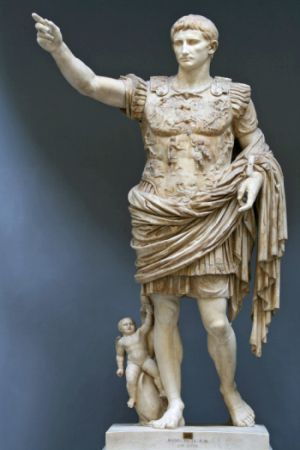
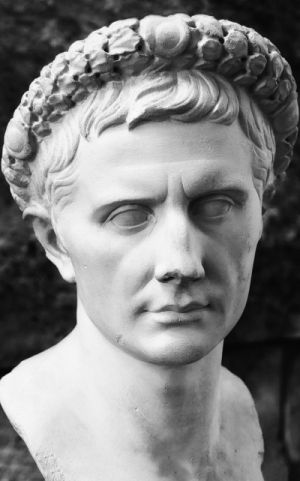
Roman Emperor Caesar Augustus
Caesar Augustus reigned from 27 BC to 14 AD. He is referred to in Luke 2:1 and orders the census that Joseph and Mary obey before the birth of Jesus.
He was an excellent administrator and shrewd politician and managed to solidify the transition of Rome from Republic to Tyranny that his relative Julius Caesar first precipitated.
Census held by Romans
- According to Roman records, they regularly enrolled taxpayers and regularly held census every 14 years. This procedure was begun under Augustus and took first place in either 23-22 BC or in 9-8 BC. The latter would the one to which Luke refers. Josephus has a later date for the census: 6-7 AD.
- An Egyptian papyrus was found giving directions for the conduct of a census. It reads: “Because of the approaching census it is necessary that all those residing for any cause away from their homes should at once prepared to return to their own governments in order that they may complete the family registration of the enrollment and that the tilled lands may retain those belonging to them” … This matches with Luke’s description of Joseph going back to Bethlehem, his native town.
King Herod the Great
- King Herod I (born 74 BC, died 4 BC) ruled Judah under Roman over-lordship from 37 to 4 BC.
- He is described by various historic sources as power-hungry, ambitious, ruthless and murderous, killing even his own family, among others two sons of his. Roman Emperor Augustus said about him that is was better to be his dog than his son.
- He was also known for huge building projects throughout Judea, for example the expanding and beautifying the Jerusalem temple (picture left), the construction of the seaport Caesarea Maritima, the refuge-fortress of Masada (vertical picture middle) and the Herodium (two pictures right).
- Matthew 2 relates how Herod the Great who inquired of the Magicians from the East and by his command boys under 2 years old were killed. He is also mentioned in Luke 1:5 as in power during the birth of John the Baptist and Jesus.
- His wine jug with an inscription referring to him has been found. Pictures right.
- After his death, the Romans divided the kingdom among his three remaining sons, Archelaus (ethnarch of Judah), Herod Antipas (tetrarch of Galilee and Perea) and Herod Philip (tetrarch of East Jordan).
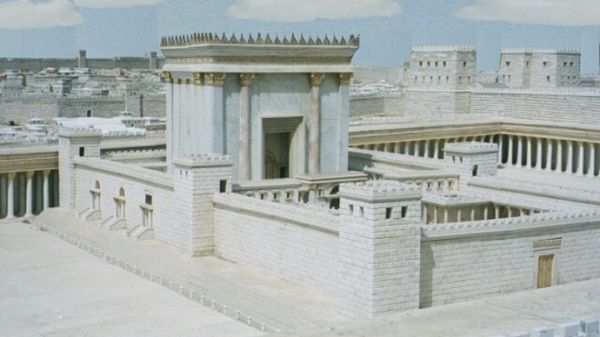
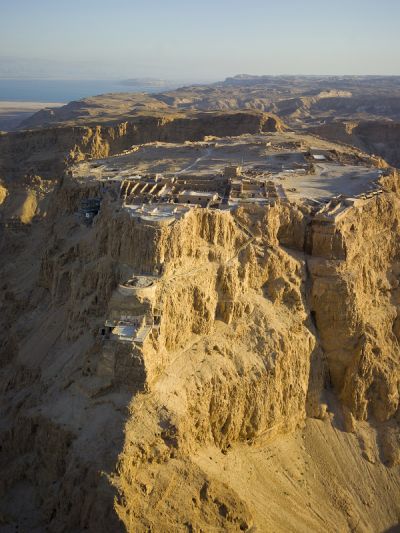
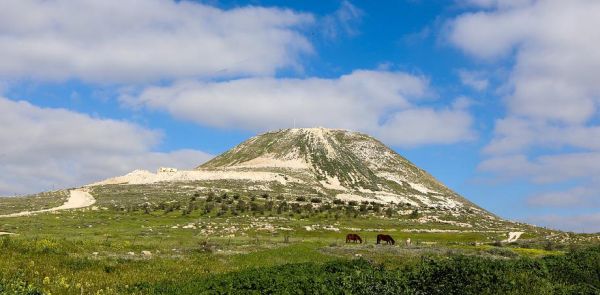
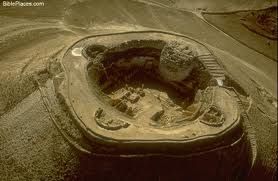
Quirinius, governor of Syria
- Jewish historian Josephus mentions Quirinius being the governor of Syria in 6 AD, a date too late for the birth of Christ.
- An inscription was found in Antioch, ascribing the post of governor of Syria to Quirinius in 7 BC, thus he was appointed to governorship over Syria twice.
Lysanias, tetrarch of Abilene
- Luke mentions a Lysanias, tetrarch of Abilene in Luke 3:1, at the beginning of John the Baptist’s ministry in 27 AD. The only Lysanias known to ancient historians was one who was killed in 36 BC. However, an inscription found near Damascus speaks of “Freedman of Lysanias the Tetrarch” and is dated 14–29 AD.
The Denarius coin used by Jesus
- In Luke 20:23-25 and Mark12:13-17 Jesus, when challenged by the Herodians and Pharisees whether or not to pay taxes, Jesus borrows a denarius coin for an illustration.
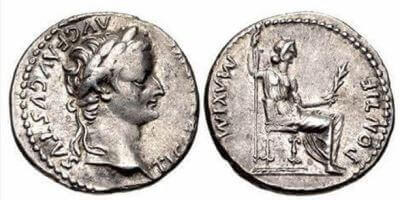
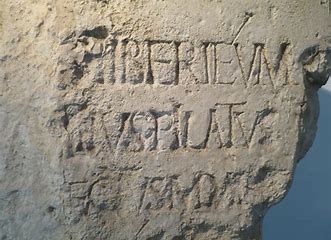
Pontius Pilate
- Pontius Pilate was Roman governor in Judea from 26-36 AD, serving under Roman Emperor Tiberius. He is mentioned in all four gospels as the Roman governor that was manipulated by the Jews into passing a death sentence by crucifixion to Jesus in most likely 29 AD.
- An inscription was found in the theater in Caesarea Maritima in 1961 AD, the then capital of the Province of Judea. It was made in 30 AD.
- The partially damaged block reads: [DIS AUGUSTI]S TIBERIEUM, [PO]NTIUS PILATUS, [PRAEF]ECTUS IUDA[EA]E, [FECIT D]E[DICAVIT], meaning ‘a building in honour of Tiberius Caesar Augustus, by Pilatus, Praefect of Judea’.
- He is also briefly mentioned by historians Tacitus, Philo of Alexandria, Josephus Flavius and others. They mention that Pontius Pilate after taking office quickly offended the Jews, and after a harsh suppression of a Samaritan uprising was recalled by Tiberius and replaced with Marcellus.
Roman Emperor Caesar Tiberius
Caesar Tiberius reigned from 14–37 AD. He is referred to in Luke 3:2 and his reign is also discussed by other ancient authors like Tacitus and Suetonius. He was emperor during the ministry, death and resurrection of Jesus.
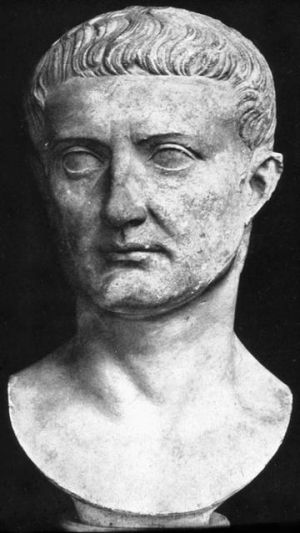
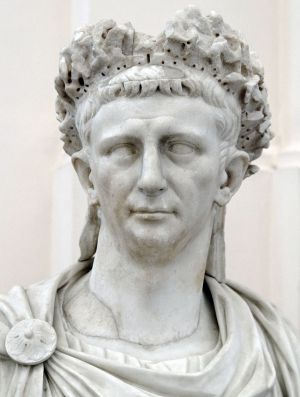
Roman Emperor Caesar Claudius
- Caesar Claudius reigned from 41-54 AD. He is referred to in Acts 11:28 and 18:2. When there was a Jewish riot in Rome in 49 AD over ‘a Chrestos’ (as Roman Historian Suetonius records), Claudius expelled the Jews from Italy. Ancient historians such as Tacitus, Suetonius and Cassius Dio wrote about him.
Historical Evidence for places mentioned in the Gospels
Pool of Siloam
- Hezekiah, a king of Judah in the 8th century BC, built a tunnel through Mount Ophel in Jerusalem southward from the underground Gihon Spring through almost 1,750 feet of rock to channel water to the Pool of Siloam inside the city walls. It was to this pool that Jesus sent a blind man to have him wash his eyes in its water and receive his sight, according to John 9:7.
- Until recently, only a small portion of the pool has been accessible. After the site was excavated in the late nineteenth century, the people of the village of Silwan (modern spelling of Siloam) built on the Northwest corner of the little pool a mosque with a minaret, which still stands above it.
- However, excavations at the site in the first six months of 2005 AD have uncovered the eastern portion of a large pool, fifty meters in length, (its width not yet known) which lies only about ten meters south of the little pool. These two are undoubtedly a part of one larger complex that was called the Siloam Pool (like the Pool of Bethesda which had two sections).
- It has a series of stone steps for entering the pool, which, being fed by fresh running water from the Gihon Spring through a small channel discovered on the north side of the pool, was probably a major facility for ritual purification before entering the temple. This may be the reason Jesus chose this pool for the miracle. A stone pavement has also recently been discovered, leading from the pool up Mt. Ophel to the Temple Mount.
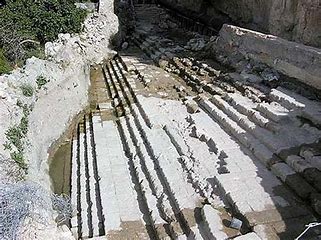
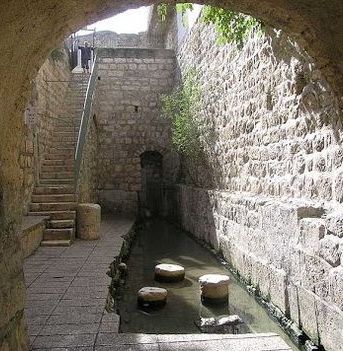
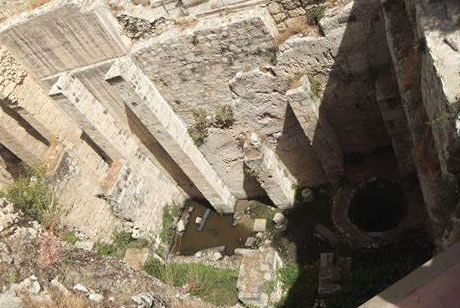
Pool of Bethesda
- The pool of Bethesda in Jerusalem is described in John 5:2 as a pool with five porticoes, where many invalids used to lay, blind, lame and paralyzed. It can now be identified “with a fair measure of certainty” in the north east quarter of the old city (the area called Bezetha, or “new lawn’) in the 1st century AD, where traces of it were discovered in the course of excavations near the Church of St. Anne in 1888 AD.
- In digs conducted in the 19th century, Schick discovered a large tank situated about 100 feet north-west of St. Anne’s Church, which he contended was the Pool of Bethesda. Further archaeological excavation in the area, in 1964 AD, discovered the remains of the Byzantine and Crusader churches, Hadrian’s Temple of Asclepius and Serapis, the small healing pools of the Asclepieion, the other of the two large pools, and the dam between them. It was discovered that the Byzantine construction was built in the very heart of Hadrian’s construction, and contained the healing pools.
- In Matthew (see Mt 28:2) it is stated that an angel descended from heaven to the tomb of Jesus, “rolled back the stone and sat upon it.” Many tombs from the time of Christ have been discovered in Jerusalem, and some of them still have these rolling stones by their entrances.
- A tomb from the time of Jesus was built for the burial of Queen Helena of Adiabene north of the Damascus Gate and has the stone still in place. Another, better preserved rolling stone, still stands beside the entrance to the tomb of the family of Herod the Great, south of the King David Hotel.
- More than 60 rolling stone tombs have been found and studied in Israel and Jordan in recent years.
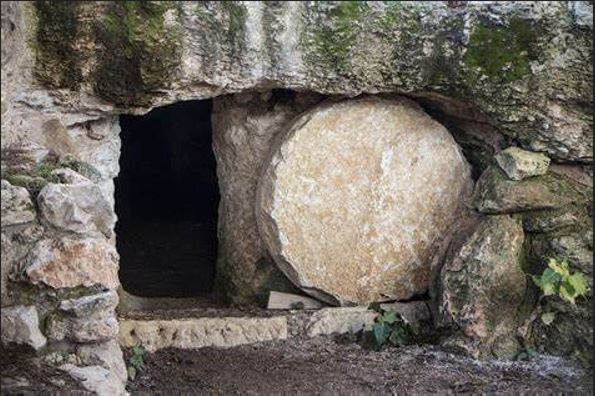
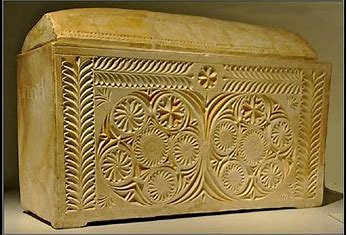
Tomb of Caiaphas
- In November, 1990 AD, a tomb was discovered in Jerusalem that contains an ornate ossuary with the name of Caiaphas carved into it (Joseph, son of Caiaphas). The burial cave is located in the Peace Forest, south of the Gehenna Valley. Picture left: Ossuary. Picture right: writing on one side.
- The high priest before whom Jesus appeared just before his death was named Caiaphas (see Mt 26:3,57; Lu 3:2; Jn 11:49; 18:13,14,24,28). Later both Simon Peter and John appeared before him in Jerusalem (Ac 4:6). Archaeologists have identified the site as the burial cave of the family of Caiaphas.
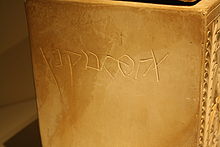
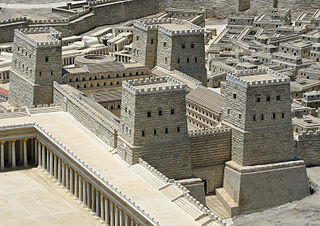
The pavement where Jesus was tried
- For centuries nobody knew where the court was, where Jesus was tried by Pontius Pilate. John in John 19:13 calls it “Gabbatha” (which simply means pavement). Picture right.
- William F. Albright in The Archaeology of Palestine shows that this court was the court of the Tower of Antonia which was the Roman military headquarters in Jerusalem. It was left buried when the city was rebuilt in the time of Hadrian and not discovered until recently. Picture left: Reconstruction of Jerusalem, with Fortress Antonia right next to the temple court.
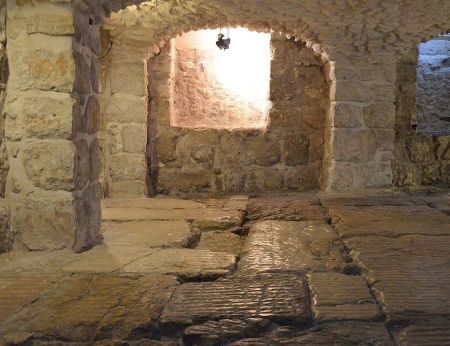
Capernaum Synagogue
- When Jesus began his public ministry in Nazareth of Galilee at about 30 years of age and was rejected in the synagogue there (see Lu 3:23; 4:16-30), he went to Capernaum, a small village on the north shore of the Sea of Galilee, where he apparently lived in the home of Simon Peter, one of his disciples (see Mt 8:14; Mk 2:1), and taught in the synagogue (see Mk 1:21; 3:1; Jn 6:59).
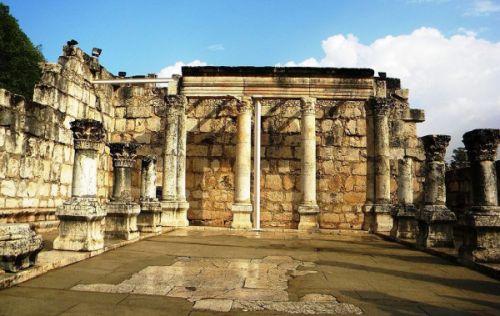
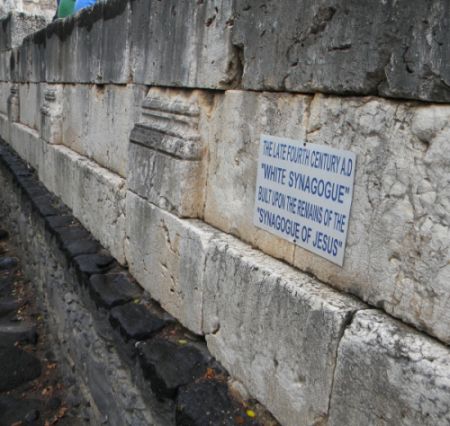
- Archaeological excavations conducted in Capernaum have discovered the whitish limestone synagogue from the 4th / 5th century AD. It is built on top of a floor (dark grey) that goes back to the first century synagogue that Jesus likely visited. Picture above.
- In 1945 AD two ossuaries (receptacles for bones) were found in the civinity of Jerusalem by Eleazar L. Sukenik in a tomb in use before 50 AD. The graffiti on the ossuaries read “Iesous iou” and “Iesous aloth.” Also present were four crosses. It is likely that the first is a prayer for Jesus for help and the second a prayer for resurrection of the person whose bones were contained in the ossuary. This find could be one of the earliest witnesses to Christianity.
- The Nazareth Inscription or Nazareth decree is a marble tablet inscribed in Greek with an edict from an unnamed Caesar ordering capital punishment for anyone caught disturbing graves or tombs. It is dated on the basis of epigraphy to the first half of the 1st century AD, some say to the reign of Tiberius (14-37 AD) or Claudius (41-54 AD). Its provenance is unknown, but a French collector acquired the stone from Nazareth. It is now in the collections of the Louvre in Paris. Picture left.
- Some think this may indicate that the disciples wouldn’t have touched the grave of Jesus, others think that news of the stir around Jesus’ death and the rumor of the resurrection may have reached the emperor in Rome who then issued this edict to prevent further problems or other claims.
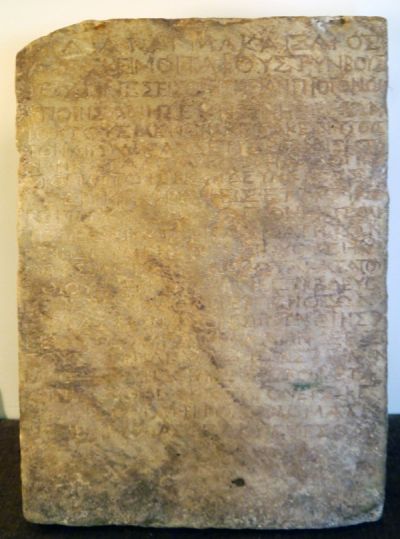
- In Acts 2:29 Peter says about David that “his tomb is with us to this day”. The grave of David or Solomon is not known today, but Roman Historian Cassius Dio (Book 69:14, 229 AD) mentions that the grave of Solomon was there and then destroyed when the Romans campaigned against Judea (Jewish-Roman war 66-70 AD most likely): “50 of their most important outposts and 985 of their most famous villages were razed to the ground. 580’000 men were slain in the various raids and battles, and the number of those that perished by famine, disease and fire was past finding out. Thus nearly the whole of Judea was made desolate, a result of which the people had had forewarning before the war. For the tomb of Solomon, which the Jews regard as an object of veneration, fell to pieces of itself and collapsed, and many wolves and hyenas rushed howling into their cities”
Historical Evidence for places people, places and events mentioned in Acts
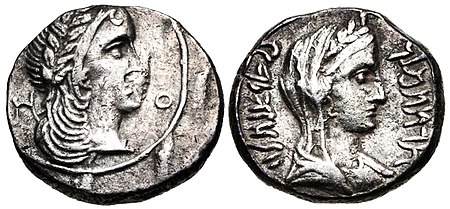
King Aretas
- Acts 9:23-25 describes a Jewish plot to kill Paul in Damascus, they guarded the gates, but the disciples lowered him down the wall in a basket at night. This event is also mentioned in 2 Co. 11:32: The governor under King Aretas guarded the city of Damascus in order to seize Paul, but he was let down in a basket through a window in the wall and escaped.
- King Aretas IV Philopatris (9 BC – AD 40) was King of Nabatea, while it was subject to Rome. It later became a Roman province. His daughter married Herod Antipas, who divorced her to marry his brother Philip’s wife, Herodias. John the Baptist objected to this, was imprisoned and later executed (Mk. 6:17). Aretas declared war on Antipas for this insult in AD 36.
- Damascus was originally the capital city of Syria, and was governed as a colony of Nabatea, by an ethnarch or governor representing Aretas. Damascus was probably given to Aretas by the emperor Gaius (AD 37-41). The plot of Jews and the Nabatean governor to seize Paul was probably the response to his preaching the gospel. Nabatea is the same area as Arabia, where Paul visited after his conversion (Gal. 1:17), where he must have preached, drawing a hostile response. Picture: Bronze Coin of Aretas IV, with the insciption “Aretas, King of Nabathea … ”
The Death of Herod Agrippa I
- Herod Agrippa I was born in 10 BC and started to reign in 41 AD over Judea, Galilee, Batanea, Perea and Trachonitis. His death in 44 AD is mentioned in Acts 12:20-23.
- Jewish historian Josephus also describes this event: Herod Agrippa was putting on a show in Caesarea in honor of the emperor and a festival for the emperor’s welfare. He invited provincial officials and other distinguished people. On the 2nd day he put on a robe of silver, and entered the room at daybreak. The sun shone on the silver, causing fear and trembling in the audience. His flatterers called out using language which was no good for him, addressing him as a god. “Be gracious to us, until now we reverenced you as a man, but now we see you be more than of mortal character”. He did not rebuke them for their impious flattery, looking up he saw an owl above him.
- Josephus explains that earlier, Agrippa had been imprisoned by emperor Tiberius, and leaned against a tree where an owl sat. A German fellow-prisoner said that the owl was a sign of an early release, but if he saw it again, it would be a sign that he had only 5 days to live. Agrippa was struck down with severe pains in his abdomen, dying 5 days later. Picture: coins minted by Herod Agrippa I.
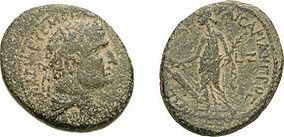
The Famine of Jerusalem
- Acts 11:27-28 mentions a severe famine in the days of Claudius. It had been predicted by prophet Agabus and took place in the days of Claudius (AD 41-54).
- Jewish Historian Josephus writes that Helena, the Jewish queen mother of Adiabene, east of the Tigris brought corn from Egypt and figs from Cyprus and distributed them in Jerusalem. Barnabas and Saul visited Jerusalem with relief.
- The famine is dated by Josephus during the days of the procurators Crispus Fadus (44-46 AD) and Tiberius Julius Alexander (46-48 AD), which would place the famine in AD 46.
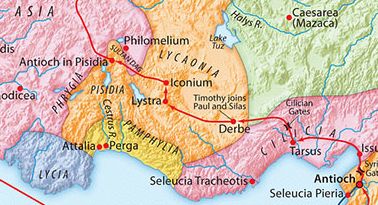
Lystra and Derbe, cities of Lycaonia, but not Iconium
- In Acts 14:6 Luke calls Lystra and Derbe cities of Lycaonia, in contrast to Iconium.
- Until recently historians thought this was inaccurate because Cicero calls Iconium a city of Lycaonia. But in 1910 AD renowned archaeologist Sir William Ramsay found a monument that showed that Iconium was a Phrygian city. Later discoveries confirm this. Picture: left: Map of the area of Lystra and Derbe.
Expulsion of the Jews from Rome
- Acts 18:2 mentions this event that happened in AD 49. The emperor Claudius expelled all Jews from Rome (excluding Jewish Roman citizens). Suetonius, in the “Life of Claudius” (Claudius 25.4) wrote: “As the Jews were indulging in constant riots at the instigation of Chrestos, he banished them from Rome.”
- This indicates Jewish disorder, probably in reaction to Christ being preached in the Roman synagogues. This edict was reversed by Nero in AD 54, when most Jews returned.
Philippi, a district of Macedonia
Luke in Acts 16:12 calls Philippi a district (Greek ‘meris’) of Macedonia. Objections were raised by F.J.A. Hort who said that this term was not used for districts, only for ‘portion’. Archaeological excavations since have shown that this very word ‘meris’ was used to describe the different parts of the district.
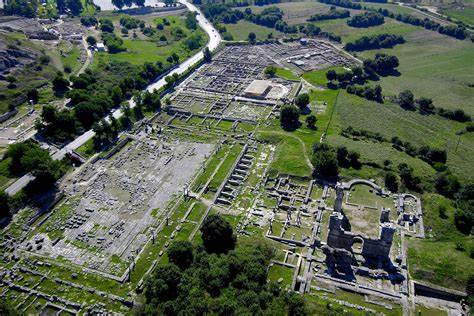
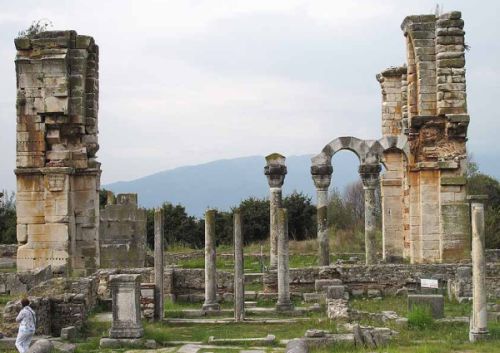
Via Egnatia
Though not mentioned in the Bible by that name, Paul used the Via Egnatia on his second missionary journey (50-52 AD) from Neapolis to Thessalonica in Acts 16:11-17:1. Later he used it again on his third missionary journey (53-56 AD) on his way through Macedonia to Corinth and back (Acts 20:1-6).
Politarchs in Thessalonica
- The credibility of the Bible has been challenged for many years by critics who have insisted that Luke, the author of the Acts of the Apostles, erroneously used the Greek term ‘politarch’ or ‘praetor’ in referring to the officials before whom Christians associated with the apostle Paul were taken in the city of Thessalonica (see Acts 17:6). It has been adamantly asserted that no such office existed at that time.
- However, an inscription containing this term has been found in that city and is now displayed in the British Museum. The inscription, which was attached to a first century arch on the Via Egnatia, begins “In the time of the Politarchs…”
- Thirty-five inscriptions have now been discovered which contain this term; nineteen of them come from Thessalonica, and at least three dates to the 1st century AD. These inscriptions prove that the office of politarch existed in Thessalonica in the time of the New Testament and that the Bible is accurate in its use of the term. Picture left.
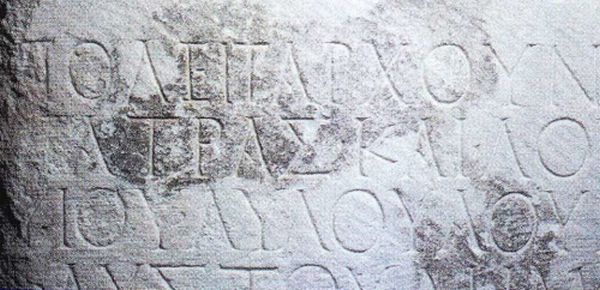
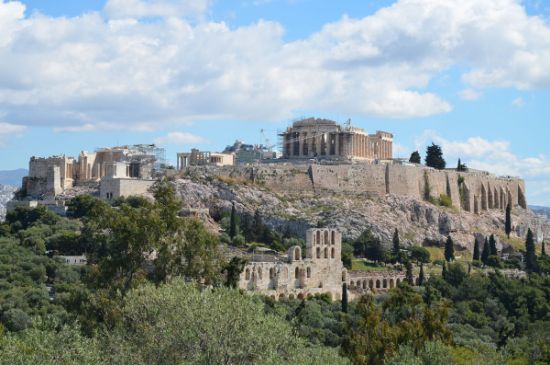
Mars Hill in Athens
Mars Hill or Aeropagus in Athens, Greece. Acts 17:22 describes Paul preaching there. It is located next to the Acropolis in the center of Athens. It probably had a building on it at one time, but now it’s just an open hill top.
Corinth’s synagogue & meat market
- A fragmentary inscription was found in Corinth thought to bear the words “Synagogue of the Hebrews”. Acts 18:4-7 mentions the synagogue of Corinth.
- Another inscription mentions the “meat market” which Paul refers to in 1 Cor 10:25.
- Pictures on the right: ruins of Corinth with the ‘temple hill’ Acrocorinth in the background.
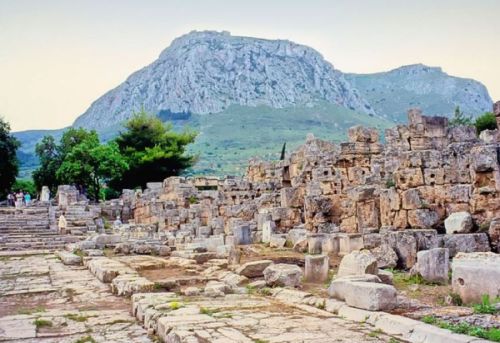
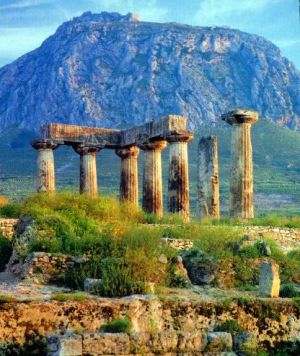
Paul before Gallio at the Tribunal in Corinth
- One of the most important discoveries relating to the New Testament is the tribunal (Greek: ‘bema’), or speaker’s platform, from which official proclamations were read, and where citizens appeared before appropriate officials.
- It still stands in the heart of the forum in Corinth, Greece. The large stone platform was identified by portions of an inscription found nearby and dated to the period 25 to 50 AD, just prior to Paul’s arrival in the city.
- Paul spent 18 months in Corinth (Ac 18:11) on his second missionary journey. At the end of that time, the Jews took advantage of the inauguration of Gallio as proconsul of Achaia in May of 51 AD, others say July 1st (see Acts 18:12) to bring Paul before him on the charge of violating their law.
- Gallio was the son of ‘the older Seneca (50 BC – 40 AD), and brother of the younger Seneca (3BC – AD65), the Stoic philosopher and advisor of Emperor Nero. He left Corinth in 52 AD, after a year (other sources), due to a fever to go on a cruise, so the incidence is quite sharply datable.
- Gallio found no violation of Roman law by Paul, no “wrongdoing or vicious crime” (see Acts 18:14), and refusing to be a judge of Jewish law, drove Paul’s accusers from this “tribunal” or “bema” (see Ac 18:16-17), where he was seated.
- Seneca perhaps informed emperor Nero in 62 AD of the fact that Paul had already been acquitted before Gallio in Corinth and thus influenced the favorable outcome of Paul’s first arrest in Rome as implied in the last verses of Acts (Acts 28:30-31).
- Gallio was visiting Corinth from his official residence in Delphi across the Corinthian Gulf. Four fragments of an inscription carved in stone which had been mounted on the wall of a public building in Delphi have been excavated, which contain information about the accession of Gallio and help to determine the date of his tenure in office, saying “As Lucius Junius Gallio, my friend, and the proconsul of Achaia …” The inscription is dated AD 52.
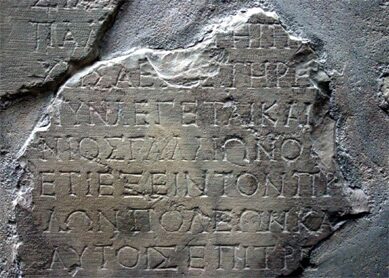
- The fragments are from a copy of a letter sent from Claudius to the city of Delphi, either to the people of Delphi or to the successor of Gallio, who had the letter carved into stone and attached to the wall of the building. It contains the name of Gallio, in addition to that of the Roman emperor Claudius, with dates for his reign.
- The letter is dated to 52 AD. Since proconsuls normally held office for one year, and these provincial governors were required to leave Rome for their posts no later than the middle of April, Gallio probably began his term of office in May of 51 AD. And since Paul had arrived in Corinth 18 months earlier than his appearance before Gallio (see Ac 18:11-12), he would have entered Corinth in the winter of 49/50 AD – perhaps in January of AD 50.
- This would coincide well with Luke’s statement in Acts 18:2, that when Paul arrived in Corinth on his second journey, he found Aquila and Priscilla, Jews who had “recently” come from Rome, “because Claudius had commanded all the Jews to leave Rome.”
- This expulsion is also referred to in other ancient sources and can be dated to 49 AD. Suetonius, chief secretary to the emperor Hadrian (117-138 AD), wrote a biographical account of the Roman emperors entitled “The Twelve Caesars“, in which he said, “Because the Jews at Rome caused continuous disturbances at the instigation of Christ, he expelled them from the City” (see Claudius 25.4). Thus, the accuracy of Luke’s account in Acts is confirmed and illustrated.
Erastus in Corinth
- Before the year 50 AD, a 62 foot square area was paved with stone at the Northeast corner of the theater in Corinth, Greece. Excavations there revealed part of a Latin inscription carved into the pavement which reads: “Erastus in return for his aedileship (curator of public buildings) laid (the pavement) at his own expense.”
- The Erastus of this inscription is identified in the excavation publication as the Erastus mentioned by Paul in Rom 16:23, a letter written from Corinth, in which Erastus is referred to as “the city treasurer (aedile)“.
- Three main points favoring the identification are set forth by the editor of the inscriptions:
- the pavement was laid around AD 50, the time when Erastus would likely have been converted;
- the name Erastus, an uncommon cognomen, is not found in Corinth other than in this inscription;
- the particular Greek word used by Paul in this passage for “treasurer” (Greek: “oikonomos”) is an appropriate term to describe the work of a Corinthian “aedile”.
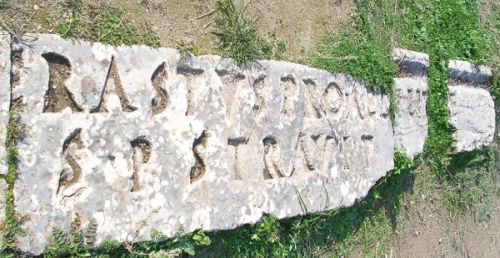
Proconsuls in Ephesus
Acts 19:21-41 describes a riot around Paul’s impact on Ephesus … It took the town clerk to quieten the crowd. In Acts 19:38 he tells people to go to court properly with this issue, saying “the courts are open … and there are proconsuls”, a very uncommon plural of ‘proconsul’. There is only one time in 54 AD when Ephesus had two 2 proconsuls parallels, the two assassins of Silanus, the former proconsul and great-grandson of Augustus, by the command of Agrippina, mother of Nero.
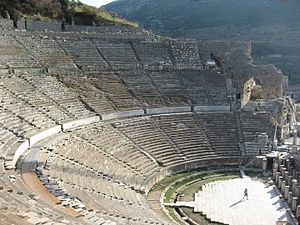
Theater in Ephesus as seat of a civic assembly
- The description of the riot in Ephesus (Act 19:23ff) mentions the crowd meeting in the theater and calls it an “assembly” (“ecclesia”, or civic assembly).
- An inscription was found that speaks of the silver statues of Artemis / Diana to be placed in the “theater during a full session of the ecclesia”, thus mentioning another civic assembly in the theater.
- But would there have been space a huge crowd to run together there? The Ephesus theater, when excavated, proved to have room for 25’000 people.
Riot in Jerusalem over a Gentile brought into the temple
- In Acts 21:28 Luke mentions a riot breaking out because a Gentile was supposedly brought into the temple. Inscriptions have been found which read, in Greek and Latin, “No foreigner may enter within the area which surrounds the temple and enclosure. Anyone who is caught doing so will be personally responsible for his ensuing death”.
- See also Eph 2:14 where Paul speaks of Christ breaking down the “dividing wall”, that is, the hostility between Jews and Gentiles.
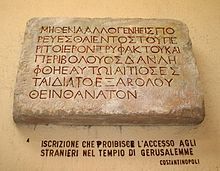
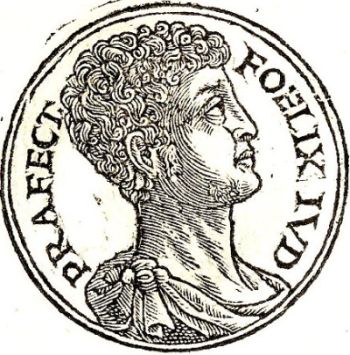
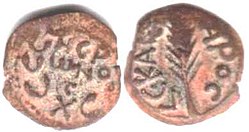
Felix and Festus
- Proconsuls Felix and Festus are mentioned in Acts 23:24 and Acts 24:27. Roman sources say that Felix was replaced by Festus as proconsul of Judea in AD 59. There had been an outbreak of Jewish-Gentile hostility and fighting in Caesarea. Felix intervened causing much bloodshed among the Jewish leadership and was recalled to Rome.
- The picture left is an imprint of a coin mentioning Felix. The picture right is an actual coin mentioning Festus.
Publius, the chief man in Malta
- In Acts 28:7 Luke gives Publius the title “first man of the island”. Inscriptions have been unearthed which mention Publius and also give him the title “first man”.
Destruction of Jerusalem, prophesied by Jesus
- In Mark 13:1-2 Jesus prophesies the complete destruction of the temple. This was fulfilled in 70 AD, when general Titus, Emperor Vespasian’s son, breaches, conquers, loots and burns Jerusalem including the temple.
- On the right the Arch of Titus in Rome, further right a detail of a relief on the Arch, depicting the lamp stand (menorah) carried off by Roman soldiers and what might be the table of show bread.
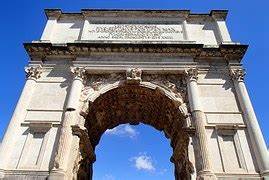
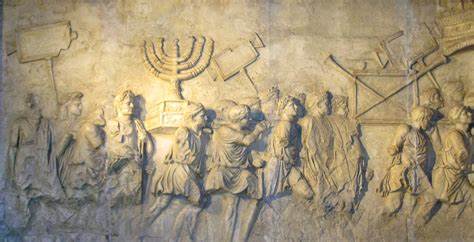
5th Century Scripture Inscription in Caesarea Maritima
- While John McRay was excavating at Caesarea on the coast of Israel in 1972 AD, they uncovered a large mosaic inscription of the Greek text of Romans 13:3. A shorter one had been found in 1960 AD by an Israeli archaeologist, Abraham Negev.
- The two texts, dating to at least the fifth century AD, are part of a mosaic floor of a large public building (perhaps a praetorium or archives’ building) and are identical to that passage in the Greek New Testament.
- These mosaics testify to the accuracy of the New Testament text together with many other old manuscripts found.
For further information
Websites
- www.biblearcheology.org
- www.4truth.net Joshua’s Conquest: Did It Happen? Robert M. Bowman, Jr. (Apologetics & Interfaith Evangelism)
- www.biblicalarcheology.org
- www.bibleandarcheology.blogspot.com
- www.christiananswers.org
- www.interbible.org
- www.bible.ca
- www.christianevidences.org
- www.visualbilblealive.com
- www.josh.org
Books
- Josh McDowell, Evidence that demands a verdict. Volume I and II
- Randall Price’s, The Stones Cry Out: What Archaeology Reveals About the Truth of the Bible (Eugene, OR: Harvest House, 1997), 125–140.
- Kenneth A. Kitchen, On the Reliability of the Old Testament,(Grand Rapids: Eerdmans, 2003), 167.
- Jeffery Sheler, Is The Bible True? 78.
- Millar Burrows, What Mean These Stones? 63.
- “The Antediluvian Patriarchs and the Sumerian King List,” by Raul Lopez, in the CEN Technical Journal 12 (3) 1998, pp. 347-57.
- Ian Wilson, The Bible Is History (Washington, DC: Regnery, 1999),
- Charles Krahmalkov, “Exodus Itinerary Confirmed by Egyptian Evidence,” Biblical Archaeological Review, Sept./Oct. 1994, 58.
- Michael D. Lemonick, “Are the Bible’s Stories True?” Time, Dec. 18, 1995
- Francis Hitching, The Mysterious World: An Atlas of the Unexplained (New York: Holt, Rinehart and Winston, 1979),
- Colin J. Humphreys, The Miracles of Exodus: A Scientist’s Discovery of the Extraordinary Natural Causes of the Biblical Stories (San Francisco: Harper San Francisco, 2003), 15-27; Wilson, Bible Is History, 73-74;